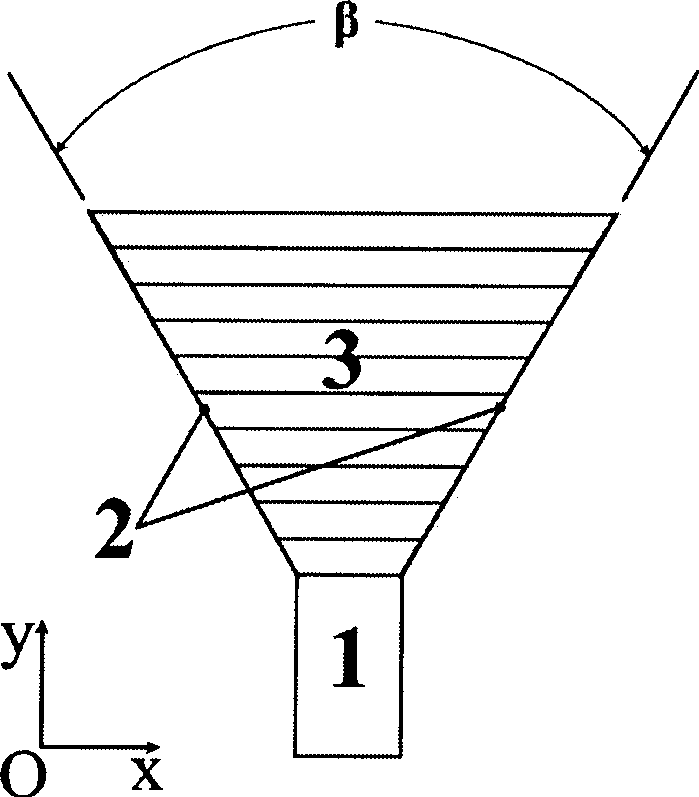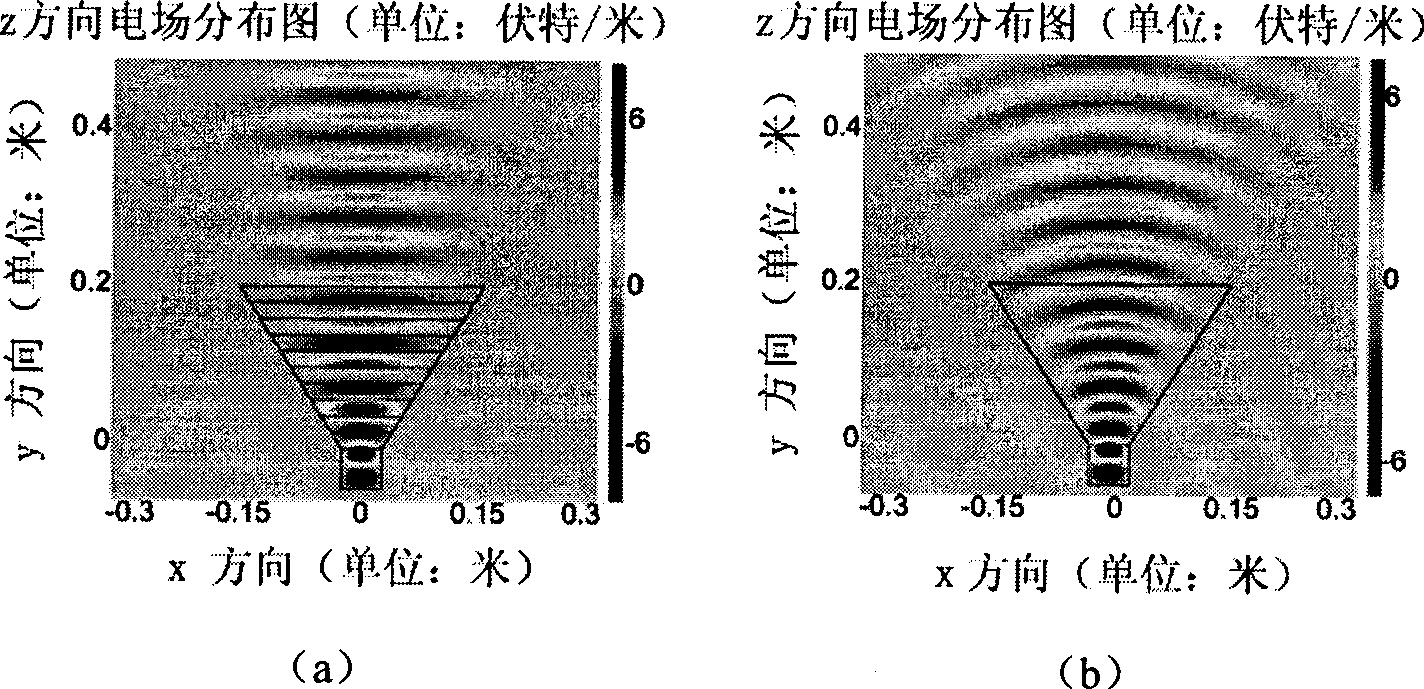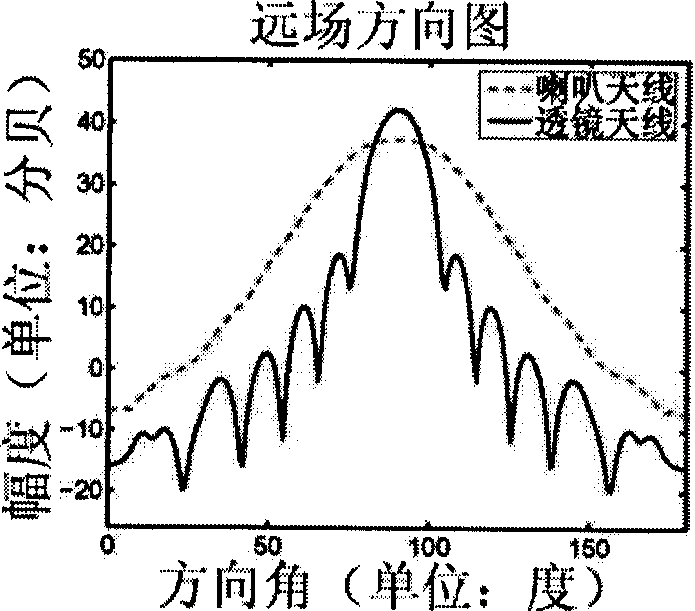High-gain layered lens antenna based on optical transformation theory
A technology of lens antenna and optical transformation, applied in the direction of antenna, electrical components, etc., can solve the problems of designing high-gain lens antenna, etc., and achieve the effect of high degree of freedom, increased gain, and simple shape
- Summary
- Abstract
- Description
- Claims
- Application Information
AI Technical Summary
Problems solved by technology
Method used
Image
Examples
Embodiment Construction
[0012] A high-gain layered lens antenna based on optical transformation theory, including a rectangular feeder waveguide 1, a metal conductor horn 2 is connected to the rectangular feeder waveguide 1, a layered lens 3 is embedded in the metal conductor horn 2, and the layered lens 3 The horn is filled and each layer of lenses is parallel to the aperture surface of the horn. The layered lens 3 is composed of non-uniform and anisotropic artificial electromagnetic materials. The direction of the electric field is perpendicular to the paper surface. The kth layer satisfies: μ x k = ϵ z k = 1 , μ y k = 1 / α k 2 , alpha k =1+(k-δ k )(b-a) / (na), where Indicates the permeability of the k-th layer...
PUM
 Login to View More
Login to View More Abstract
Description
Claims
Application Information
 Login to View More
Login to View More - R&D
- Intellectual Property
- Life Sciences
- Materials
- Tech Scout
- Unparalleled Data Quality
- Higher Quality Content
- 60% Fewer Hallucinations
Browse by: Latest US Patents, China's latest patents, Technical Efficacy Thesaurus, Application Domain, Technology Topic, Popular Technical Reports.
© 2025 PatSnap. All rights reserved.Legal|Privacy policy|Modern Slavery Act Transparency Statement|Sitemap|About US| Contact US: help@patsnap.com



